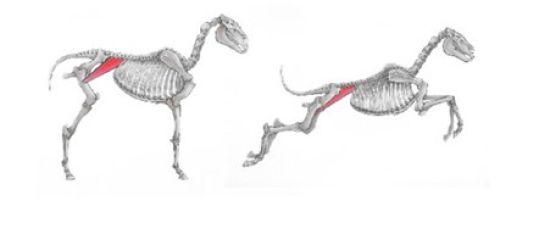
Understanding iliopsoas muscle injuries to safeguard your dog's well-being
In our practice, we frequently encounter canine patients grappling with issues in their groin or iliopsoas muscles. These problems often manifest as a source of injury, chronic discomfort, and hind limb lameness in dogs. This article aims to shed light on the frequently misunderstood iliopsoas muscle, outlining its functions, the causes of injury, and how to prevent and treat these issues in our cherished canine companions.
Where is the Iliopsoas Muscle?
The iliopsoas muscle is a pivotal player in a dog's lower body anatomy, composed of two muscles: the Iliacus and the Psoas major, hence its name "iliopsoas." This muscle lies along the underside of a dog's lower (lumbar) spine, extending toward the rear leg and connecting to the inner side of the femur, the thigh bone.
What Does It Do?
The iliopsoas muscle serves as a core component in a dog's lower body movements, influencing actions such as jumping, sitting, standing, forward motion, and directional changes.

Image credit: www.massagetherapy.com
Primary functions of the iliopsoas muscle
- Hip Flexion: The psoas component of the iliopsoas flexes and externally rotates the hip (imagine a male dog urinating on a tree). This hip flexion readies the body for explosive forward movements or sudden directional shifts. In highly active dogs, this muscle works tirelessly and can become overused or prone to injury.
- Spinal Flexion: The iliopsoas also plays a significant role in flexing the lumbar spine, such as when a dog arches its back during activities like defecation. Tightness or discomfort in this muscle can lead to a hunched spine.
- Hip Joint Stabilization: The iliopsoas muscle plays a pivotal role in maintaining balance, as it engages whenever the lower back or hips require flexion. It contributes to the alignment of the vertebral column and pelvic position, promoting symmetry. When this muscle is in pain or spasm, it can lead to compensation from other muscles in the lower back and hip area, causing additional discomfort.
How does it get injured?
Iliopsoas injuries can occur in three main ways, usually with abnormal or excessive force:
- Repetitive or high energy activities: Dogs involved in highly athletic pursuits, such as intense ball-fetching, can strain their iliopsoas muscle when their bodies contort at high speeds during these activities. And because of the explosive start (when the see you throw the ball) and sudden stop.
- Slipping and Sliding on slippery floors: This is common, dogs may overstretch and injure the iliopsoas when they slip or fall with their legs splayed out. This becomes more common as the pet gets older and has less supporting muscles. If you see your pet slipping at home, this will become a repetitive injury and painful.
- Orthopedic Problems: Underlying orthopedic conditions like hip dysplasia, back injuries, cruciate ligaments tears can lead to muscle guarding, causing the iliopsoas to tighten and potentially strain more easily.
Is My Dog Prone to Iliopsoas Injury?
Understanding the common scenarios where injury occurs can help identify whether your dog is at risk. The following situations may indicate susceptibility:
Energetic Dogs: Pets that engage in explosive or energetic actions, like rapid acceleration, jumping, or intense running (e.g., chasing a ball), are at risk. This risk persists with senior pets.
Orthopedic Issues: Dogs with orthopedic problems such as hip dysplasia, knee injuries, or osteoarthritis are prone to iliopsoas injuries. They may guard their joints, leading to muscle shortening and pain when attempting to stretch the muscle.
Weekend Warriors: Dogs with sporadic, overactive weekends featuring high-intensity play without proper conditioning are more likely to injure their muscles.
Poor Conformation: Abnormal spinal alignment can increase the risk of iliopsoas muscle injuries.
Weak Back Legs or Lower Back Pain: Senior pets and those with lower back issues may experience compensatory strain in the iliopsoas muscle.
Inadequate Warm-Up: Proper warm-up before exercise is essential. This includes a gentle trot or jog with sniffing breaks before engaging in vigorous play or activity.
Signs of Pain and Injury- could your pet have an iliopsoas strain?
- Difficulty rising or climbing stairs.
- Outward rotation of the leg while walking (to avoid the strain)
- A "tucked" or hunched position when standing or walking- this can be both the pelvis tucking or the lumbar spine flexing to find a shorter more comfortable muscle position.
- Reluctance to jump, play or engage in strenuous activities. Needing more rest time while out on walks.
- Intermittent hind limb lameness made worse after exercise.
- Your pet not lifting its leg to urinate or lift the leg for tummy tickles.
- Hip pain- your family doctor finds your pet doesn't like extending their leg. While this of course can be hip joint pain come up because of where this muscle attaches this test for a hip discomfort will also show a reaction if this muscle is injured, guarding, or painful.
- Pain when the muscle is pressed or stretched. This muscle is difficult to locate, this is how you are pet’s physical therapist will be able to identify an issue. We watch for subtle changes in the pets behaviour as we approach the muscle and when we touch the muscle as well as how the muscle feels to our skilled fingertips.
Preventing Iliopsoas Injury
Prevention is key to safeguarding your dog's health. Implement these measures:
Controlled Activity: Dogs engaging in fast and vigorous activities may need controlled play to reduce impact, avoid jumping on and off furniture (use stairs), and steer clear of rough play with other dogs at the park.
Traction: Ensure good traction for your dog to run on, both indoors and outdoors. Use mats or toe grips for traction and keep paw fur trimmed and feet dry. Add non-slip mats at the key areas where your dog runs inside the home (to the kitchen, to the door!).
Proper Warm-Up: Always warm up before exercise with a gentle trot or jog, with sniffing breaks before more vigorous play. Only work on muscle stretches or massage after a warm up, or when back from activity and walks.
Senior Pets and Dogs with Joint Problems: In senior pets or dogs with ongoing joint issues, the trigger for a flare up of this iliopsoas muscle pain is not going to go away. Working on our long term program with your veterinary physical therapist will help maintain relief and prevent further strange often these pets will review for treatment every one to two months to help maintain their comfort.
相關產品
This site is protected by reCAPTCHA and the Google Privacy Policy and Terms of Service apply.









